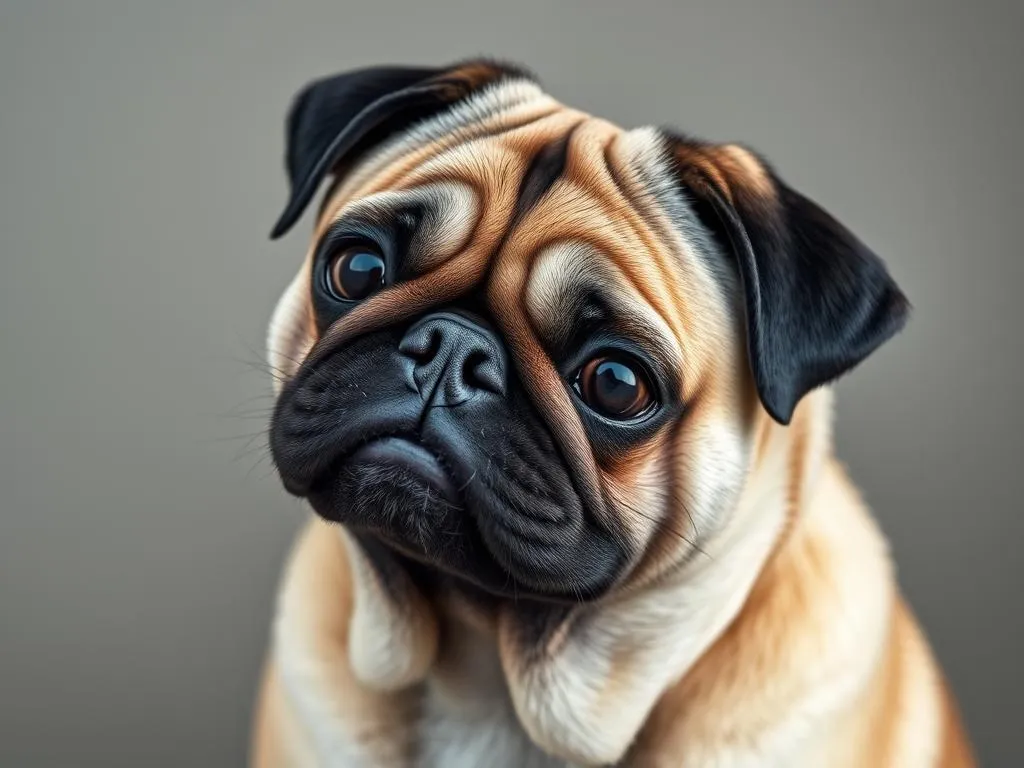
Pugs have gained immense popularity as companion animals over the years, and it’s not hard to see why. Their charming personalities, distinctive looks, and playful demeanor often lead to the question: do pugs make good pets? In this article, we’ll delve into the characteristics, advantages, and challenges of owning a pug, helping potential pet owners decide if this breed fits their lifestyle.
Understanding Pugs
Origins and History
Pugs trace their lineage back to ancient China, where they were cherished companions for emperors and nobility. Their historical significance is notable; they were often depicted in art and were even believed to bring good luck. As trade routes expanded, pugs made their way to Europe in the 16th century, where they quickly became popular among the upper classes. Their presence can be felt in various cultures, symbolizing loyalty and companionship.
Physical Characteristics
Pugs are small but sturdy dogs, typically weighing between 14 to 18 pounds. They stand about 10 to 14 inches tall at the shoulder. One of their most recognizable features is their wrinkled face, which houses large, expressive eyes. Their short snouts contribute to their distinct look, but they also come with health considerations. Pugs have a smooth, short coat that can be fawn, black, or silver, requiring minimal grooming.
Temperament and Personality Traits
Pugs are known for their affectionate and playful nature. They thrive on human interaction, often forming strong bonds with their families. Unlike some breeds that may be more independent, pugs crave companionship and are known to be quite sociable. Their playful antics can bring joy and laughter, making them a delightful addition to any household. When compared to other popular breeds like Beagles or Dachshunds, pugs often stand out for their quirky personalities and adaptability.
Pros of Owning a Pug
Companionship and Affection
One of the most compelling reasons to consider a pug as a pet is their unwavering loyalty and affection. Pugs are known to bond closely with their owners, often following them from room to room and seeking out cuddles. Their affectionate nature makes them excellent companions for individuals, families, and seniors alike.
Adaptability to Living Spaces
Pugs are highly adaptable dogs, making them well-suited for a variety of living environments. Whether you live in a spacious house or a cozy apartment, pugs can thrive as long as they receive enough attention and love. Their small size allows them to be comfortable in smaller spaces, and they require less room to roam compared to larger breeds.
Low Exercise Requirements
For busy individuals or families, pugs can be an ideal choice due to their relatively low exercise needs. A couple of short walks, along with playtime indoors, is usually sufficient to keep them happy and healthy. This makes them perfect for those who may not have time for extensive outdoor activities.
Unique Traits and Quirks
Pugs are known for their amusing and often goofy behavior. Their playful personalities can lead to endearing antics that make them a joy to be around. Whether it’s their signature “pug dance” or their famous snorts and snuffles, pugs can lighten the mood and provide endless entertainment.
Cons of Owning a Pug
Health Issues
While pugs make delightful companions, they are not without their health concerns. Due to their brachycephalic (short-nosed) structure, pugs are prone to respiratory issues, which can lead to breathing difficulties, especially in hot or humid weather. Additionally, they are susceptible to obesity, which can exacerbate other health issues. Regular vet check-ups and a healthy diet are vital for maintaining their well-being.
Grooming Needs
Pugs have a short coat, which means they do not require extensive grooming. However, their wrinkles need special attention to prevent skin infections. Regular cleaning of the facial folds is essential to keep them dry and free from debris. While grooming may not be as time-consuming as it is for some breeds, it’s still an important aspect of pug care.
Training Challenges
Training a pug can present its own set of challenges. While they are intelligent, pugs can also be quite stubborn. Their short attention span can make training sessions a bit tricky, and consistency is key. Potential owners should be prepared for a training process that may require patience and creativity.
Lifespan and Commitment
Pugs typically have a lifespan of 12 to 15 years, requiring a long-term commitment from their owners. Prospective pug owners should be ready for the responsibility of caring for a dog for this duration, understanding that their needs will change over the years.
Is a Pug Right for You?
Lifestyle Considerations
Before deciding to bring a pug into your home, it’s important to assess whether your lifestyle aligns with the needs of this breed. Pugs thrive in environments where they receive plenty of attention and interaction. If you travel frequently or spend long hours away from home, a pug’s need for companionship may not be met.
Family Compatibility
Pugs are generally good with children and can make excellent family pets. Their playful nature and affectionate demeanor allow them to bond well with kids. However, it’s essential to teach children how to interact with pets gently. Pugs also tend to get along with other animals, but early socialization is crucial.
Financial Considerations
Owning a pug comes with various costs that potential owners should consider. Expenses may include food, routine vet visits, grooming, and potential health care costs related to their predisposition to certain conditions. Understanding these financial commitments is essential for a responsible pet owner.
Caring for a Pug
Diet and Nutrition
A well-balanced diet is crucial for maintaining a healthy pug. High-quality dog food that meets their nutritional needs is essential. Be cautious of overfeeding, as pugs are prone to obesity. Consulting with a veterinarian regarding the best diet for your pug, considering their age and activity level, is a wise choice.
Exercise Recommendations
While pugs may have low exercise requirements, it’s essential to engage them in daily activities to keep them healthy and prevent weight gain. Short walks and interactive play sessions can be beneficial. However, be mindful of their breathing difficulties; avoid strenuous activities in hot weather.
Regular Health Check-ups
Routine veterinary care is vital for pugs. Regular check-ups can help catch potential health issues early, ensuring that your pug remains healthy throughout their life. Vaccinations, flea and tick prevention, and dental care should also be part of their regular health routine.
Socialization and Training
Early socialization and training are critical for pugs. Exposing them to various environments, people, and other pets can help them develop into well-rounded dogs. Positive reinforcement techniques work best with pugs, as they respond well to praise and treats. Consistent training sessions can help curb any stubborn tendencies.
Conclusion
When considering the question do pugs make good pets, it’s clear that they possess many qualities that can make them wonderful companions. Their affectionate nature, adaptability to living spaces, and playful quirks often endear them to families and individuals alike. However, potential owners should be mindful of their health issues, training challenges, and the commitment required for long-term care.
Ultimately, the decision to welcome a pug into your home should be based on a careful assessment of your lifestyle, family dynamics, and willingness to meet the breed’s needs. With the right approach, a pug can indeed be a delightful addition to your life.









